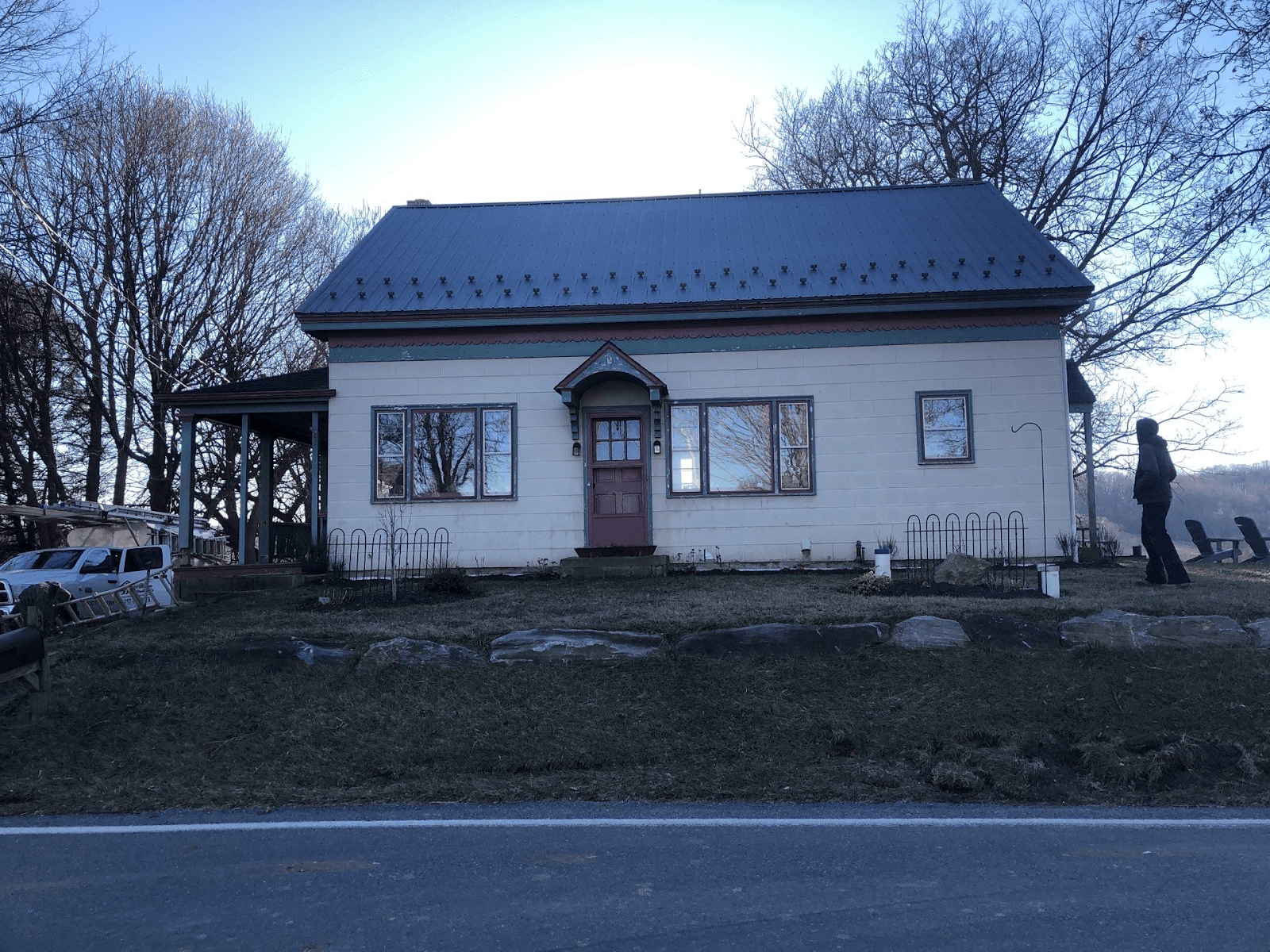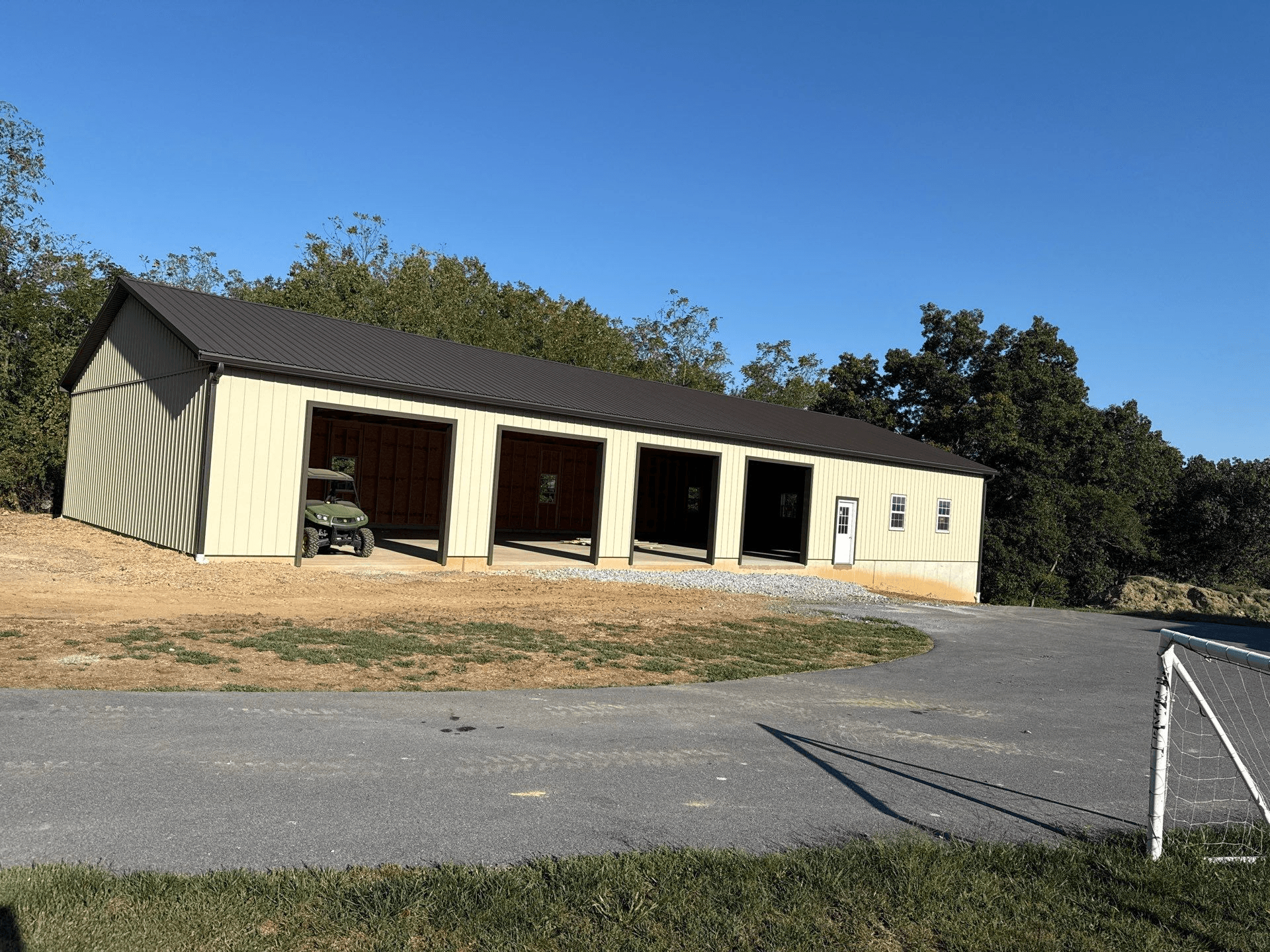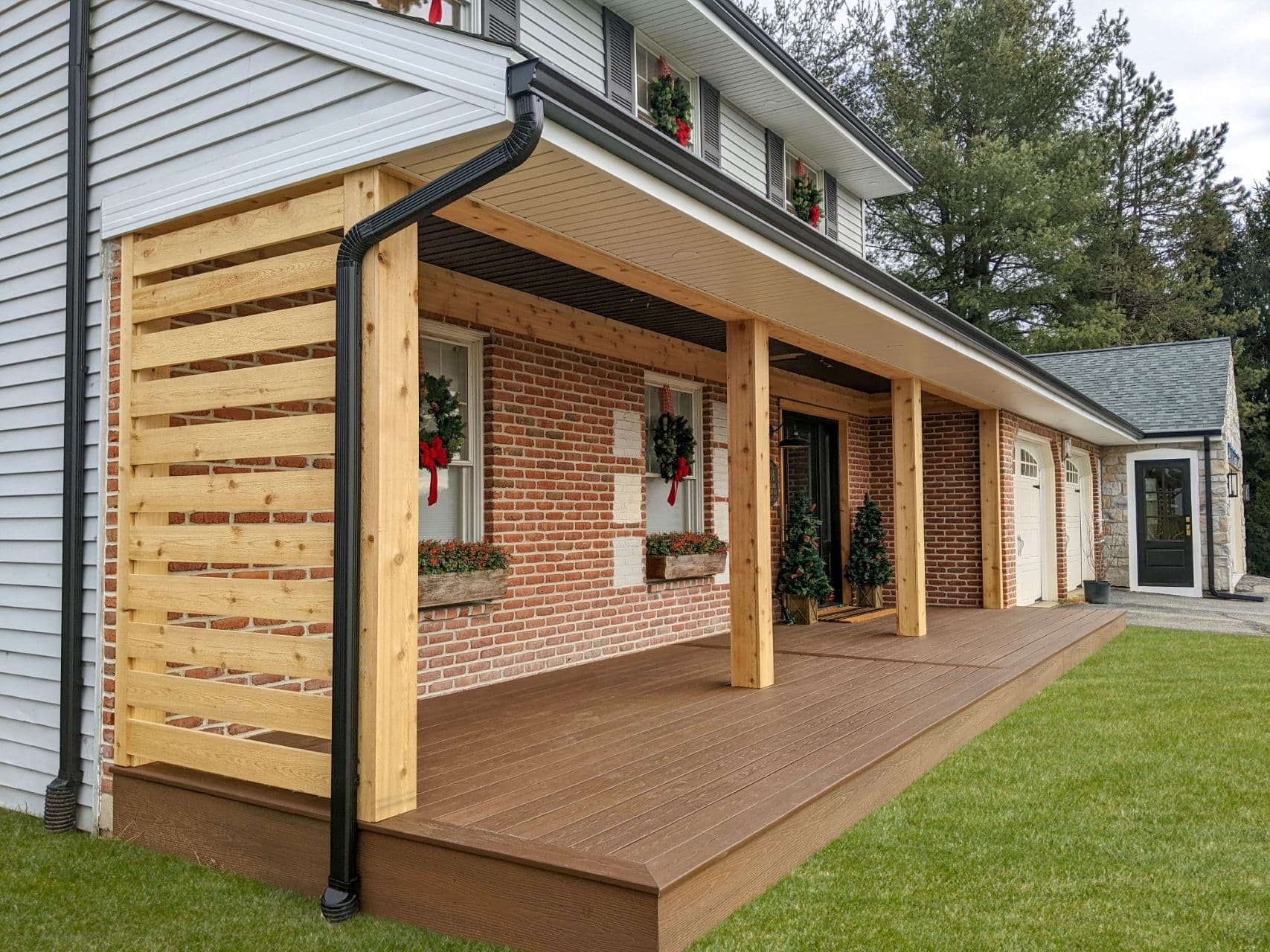
Is Your Home Rain-Resilient? Tips for Building in Pennsylvania’s Wet Climate
Rain-resilient homes play a significant role in protecting Pennsylvania residents. Living in a state that receives over 40 inches of annual rainfall[-1] means protecting your property isn’t just a seasonal concern. Your home needs year-round protection.
Pennsylvania’s climate creates unique challenges to homeowners, especially when you have residential rain protection needs. Dream homes can quickly turn into moisture nightmares with flooded basements and leaky roofs during heavy downpours. Many residential structures across the state weren’t built to handle today’s increasingly wet climate patterns. Our team at JJ Builders has witnessed how proper planning substantially reduces water-related problems for homeowners.
Table Of Contents
- Understanding Pennsylvania’s Wet Climate
- Designing a Rain-Resilient Home
- Upgrades and Maintenance for Long-Term Protection
- Conclusion
- FAQs
This piece explores Pennsylvania’s rainfall patterns and their effects on your home. You’ll learn about design elements that create truly rainforest-inspired homes to withstand moisture. We’ll also cover maintenance practices that protect rain residential rentals and privately-owned properties for decades. These rain-resilience principles will help safeguard your valuable investment, whether you’re building new or upgrading an existing property.

Understanding Pennsylvania’s Wet Climate
Pennsylvania’s climate poses unique challenges for home construction. The state averages 42–44 inches of rainfall annually, 14% more than the national average, with wetter springs and summers and more intense storms in recent years. Climate change has increased extreme downpours by 10%, overwhelming standard drainage systems and putting homes at greater risk of water damage.
Regional and soil differences add to the complexity. Western and eastern parts of the state receive varying rain amounts, while central mountain areas deal with elevation-related issues. Clay-heavy soils common in many areas drain poorly, pushing water toward foundations, while sandy soils can erode under heavy rain. These conditions make it essential to design homes that can manage moisture, from roof materials to drainage and foundation systems.
Designing a Rain-Resilient Home
Your home’s design can make or break its defense against Pennsylvania’s constant rainfall. Building a rain-resistant home in our state needs careful planning right from the start.
A solid foundation acts as your home’s shield against moisture. Your basement or crawlspace needs proper waterproofing and exterior drainage systems that channel water away. French drains are perfect for Pennsylvania’s clay-heavy soil because they create natural paths for water to flow away from foundation walls.
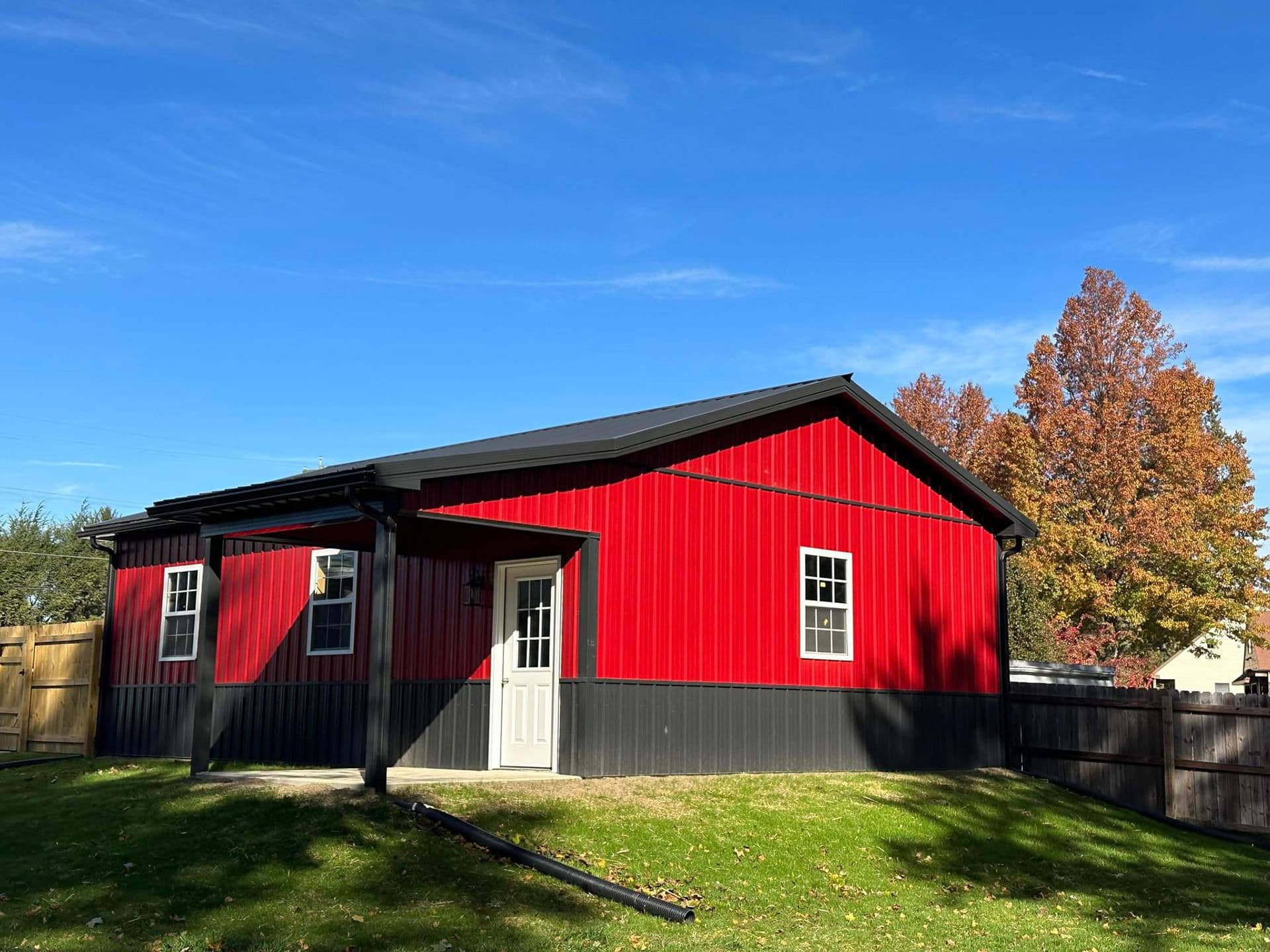
The roofing is just as crucial for rain protection. Steep pitches (at least 6:12) work best in our climate and help snow and rain slide off easily. Wide overhangs of 24-36 inches shield your siding and foundation from too much moisture.
The materials you choose will determine how well your home handles wet seasons. For exterior siding, fiber cement products stand up to moisture while looking great. Pressure-treated lumber used in exterior wood elements fights rot and lasts longer.
Smart window installations need proper flashing and weather-resistant barriers to stop water from seeping in. A home envelope system with housewrap and overlapping techniques creates a solid moisture barrier throughout.
Your gutters and downspouts need extra attention here. We prefer to consider both 6-inch gutters and 5-inch ones (as per the preference of the owner), with downspouts every 20-30 feet to handle Pennsylvania’s heavy rains.
The landscape around your home needs a 6-inch slope over the first 10 feet from your foundation. This simple design keeps water from collecting near your house during those fierce summer storms we often see.

We’ve learned that a good drainage plan built into your original home design stops most water problems that plague Pennsylvania homes. Money spent on these rain-resistant features protects your home for years to come.
Upgrades and Maintenance for Long-Term Protection
Pennsylvania’s challenging climate demands regular maintenance even from the best-designed homes. Your home’s protective systems can slowly break down from constant rainfall exposure if you don’t maintain them properly.
Long-term protection starts with seasonal maintenance. You should check your gutters and downspouts every three months at minimum, plus extra inspections after big storms. Water backing up under roof shingles or pouring onto foundations happens often. We could prevent these common problems with regular gutter cleaning.
Spring and fall are perfect times to check your roof. Watch for shingles that are loose, damaged, or missing – they might let water seep in. Quick replacement of damaged shingles costs nowhere near as much as fixing water damage in your attic and home later.
Older homes need strategic upgrades to handle rain better. A quality sump pump with battery backup is vital insurance against power outages during bad storms. Our specialized solutions help countless Pennsylvania homeowners avoid flooded basements.
Waterproofing your foundation makes a big difference. Exterior waterproofing gives better protection than interior treatments, though it costs more upfront. Interior sealants and waterproof coatings work well when you can’t dig around the outside.
Your landscaping plays a key role in managing water. Rain gardens catch runoff while adding beauty to your yard. We make sure all landscaping slopes away from the foundation properly.
People often forget about their windows, but bad seals and weatherstripping let lots of water in. Check and recaulk every 1-2 years to stop moisture problems before they start.
Conclusion
Building a rain-resilient home in Pennsylvania takes careful planning, quality materials, and regular upkeep. Our state’s unique climate means you just need homes that can handle normal rainfall and the extreme weather events that keep hitting us year after year. Protecting your biggest investment against water damage will save you a lot of money and help you avoid countless headaches later.
You need to understand Pennsylvania’s specific climate patterns first. This knowledge will guide every choice from picking the right roof pitch to designing proper drainage systems. Local builders who understand these regional challenges play a crucial role in the process.
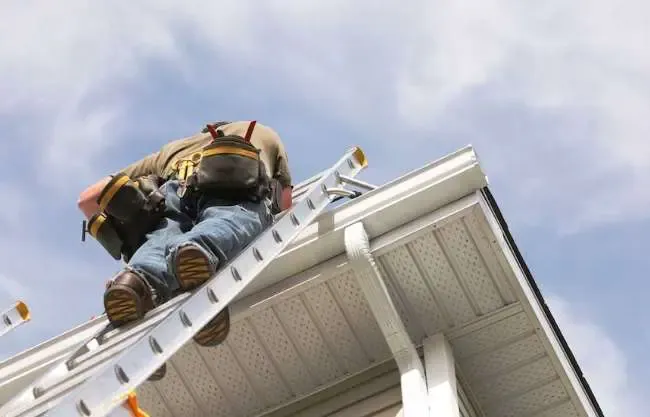
Your home’s best defense against our constant rainfall is regular maintenance. Simple tasks like cleaning gutters, checking roofs, and inspecting foundations might feel like a hassle but they prevent repairs that can get pricey later. These routine checks will improve your home’s lifespan by a lot in our tough climate.
Older homes can become weather-resistant through smart upgrades like installing sump pumps, waterproofing foundations, and changing the landscape. These focused improvements can reshape the scene of vulnerable properties into weather-resistant sanctuaries, even with their original design limits.
JJ Builders focuses on creating homes that stay strong against Pennsylvania’s wet climate while looking great and working well. Your home should keep you comfortable and secure whatever weather shows up outside. With the right design, quality construction, and consistent maintenance, your Pennsylvania home will stay dry and protected for generations, rain or shine.
FAQs
How does Pennsylvania’s climate affect home construction?
With over 40 inches of annual rainfall and heavy spring snowmelt, Pennsylvania homes must be built with effective water management and moisture-resistant materials to handle constant ground saturation.
What are some key features of a rain-resilient home in Pennsylvania?
Features include steep roofs (6:12+), wide overhangs, waterproofed foundations, French drains, large gutters/downspouts, moisture-resistant materials, and graded landscaping.
How often should I inspect my home for water-related issues?
Inspect gutters quarterly and after storms; check the roof twice a year (spring/fall), and regularly inspect windows, foundation, and landscaping.
What upgrades can improve an existing home’s rain resilience?
Install a sump pump with backup, waterproof the foundation, add rain gardens, regrade landscaping, and maintain seals and weatherstripping.
How far should a rain garden be from my home’s foundation?
Place it at least 10 feet from the foundation, with adjacent ground sloping away at a minimum 2% grade to prevent water from seeping back.
JJ Builders – Build Rain-Resilient, Build Smart
→ Protect your investment with a local team that understands Pennsylvania’s wet climate
→ Thoughtful planning, clear communication, and expert rain-ready design from the ground up
→ Create a custom home that’s beautiful, functional, and built to handle the elements
Start building with confidence—rain or shine →
⭐⭐⭐⭐⭐ Trusted by homeowners across the Carolinas for reliable, high-quality work
Related articles
Ready to Build? Here’s How to Prep Like a Pro
How to Plan the Perfect Post Frame Builder for Your Property
Ready to start your next custom build?
Recent Posts
When it comes to designing your dream barndo, custom home, garage, or post-frame structure, one...
Metal roofing has become the top choice for Lancaster County homeowners and farmers. Traditional asphalt...
Why do property owners choose pole barns as their go-to construction option? Space constraints and...
The first step is a phone consultation.
If needed, we will meet with you in person as well!


Contact Us

Monday-Friday 8:00 am - 4:30 pm


